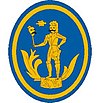Szécsény
| Szécsény | ||
|---|---|---|

The main square
|
||
|
||
| Location of Szécsény | ||
| Coordinates: 48°05′00″N 19°31′00″E / 48.08333°N 19.51667°ECoordinates: 48°05′00″N 19°31′00″E / 48.08333°N 19.51667°E | ||
| Country |
|
|
| County | Nógrád | |
| Area | ||
| • Total | 45.83 km2 (17.70 sq mi) | |
| Population (2004) | ||
| • Total | 6,392 | |
| • Density | 139.47/km2 (361.2/sq mi) | |
| Time zone | CET (UTC+1) | |
| • Summer (DST) | CEST (UTC+2) | |
| Postal code | 3170 | |
| Area code(s) | 32 | |
Szécsény (Slovak: Sečany) is a town in Nógrád county, Hungary.
The valley of the Ipoly and especially the area of that around Szécsény was inhabited even in the prehistoric age. Findings attest that the region was peopled from the Neolithic period. Teutons, Avars, and Slavs appeared here in the first millennium BC.
Hungarians settled down in the surrounding country in the decades following the Hungarian Conquest, which began in AD 895. The town itself must have originated from that era. The burial places found on the confines of the town render this pretension probable.
The first genuine written document about Szécsény dates back to 1219. In 1334, Lord Chief Justice Thomas Szécsényi induced King Charles Robert to permit the status of town, so Szécsény became a market town in the same year.
The Turkish occupied Szécsény in 1552 under the name "Seçen" and after that the town became the center of a sanjak for several decades. The first Turkish occupation ended in 1593, whereupon Zsigmond Forgách became the landed proprietor of the town and the captain of the fortress at the same time. The second Turkish occupation lasted 20 years. Szécsény became practically deserted by the end of the nearly 150-year Turkish rule.
One of the most glorious parts of the town history is linked with the war of independence in 1703 that was called into being against Habsburgs by Prince Ferenc Rákóczi II. The Prince convened the Diet into our town in September 1705, where he was elected the ruling Prince of Transylvania and commander-in chief of the Hungarian insurgent forces. Although the war of independence failed, the inhabitants of the town still treasure the Prince's memory. Many town institutions bear his name.
1737 is a remarkable date in the life of the town as the Forgách repurchased their property from Koháry family. The town began a slow development in the 18th century, a lot of private houses were built and the first pharmacy of the county was opened in 1741. The baroque style Forgách Castle - which is a museum nowadays - was built in that century as well.
The development of the town slowed down in the 19th century and fell behind other towns in Nógrád, such as Balassagyarmat, Losonc, Salgótarján. Szécsény lost its town status in 1886 owing to the decision of Parliament. In spite of the situation, a town hall was built in 1905 and the municipality organized a brilliant commemorative Rákóczi festival on the 200th anniversary of the 1705 Diet.
After the Treaty of Trianon in 1920, following the First World War, Szécsény became a frontier town, which has hindered its development until the present day. The Second World War did not keep out of Szécsény's way either. During the fighting raging in December 1944, the inhabitants suffered greatly.
...
Wikipedia


